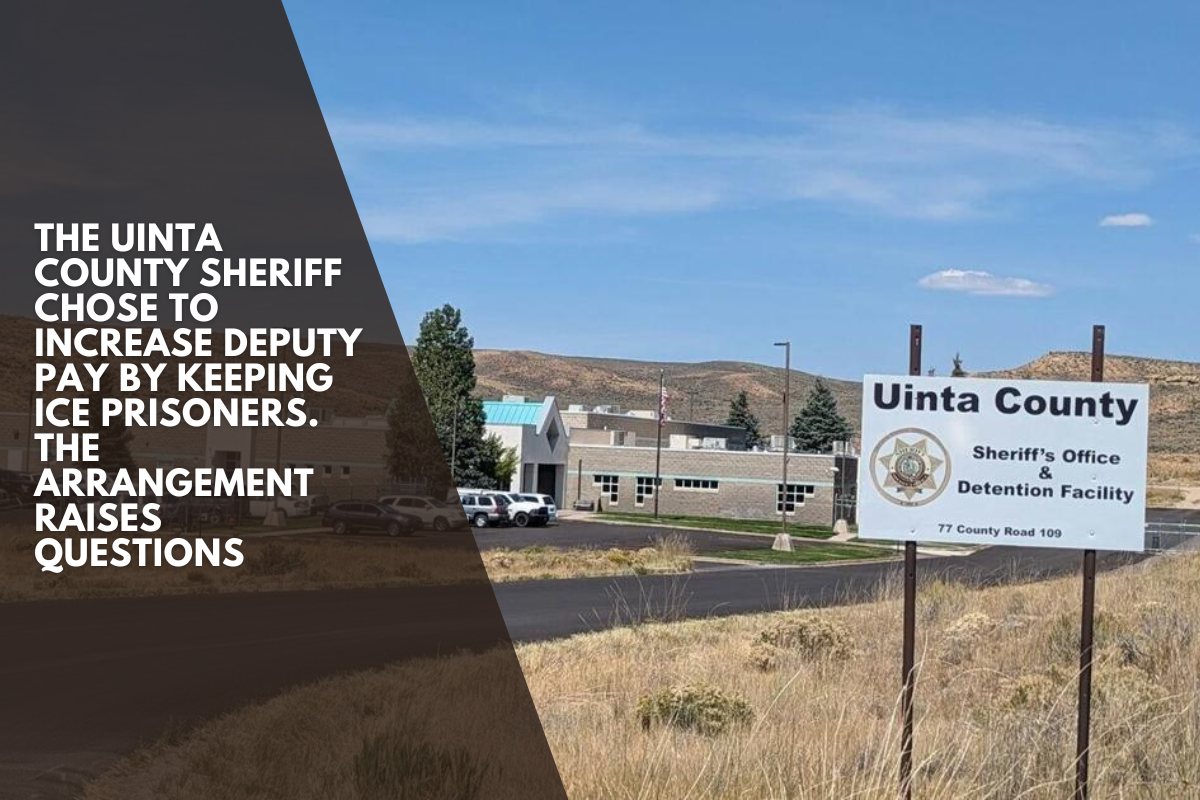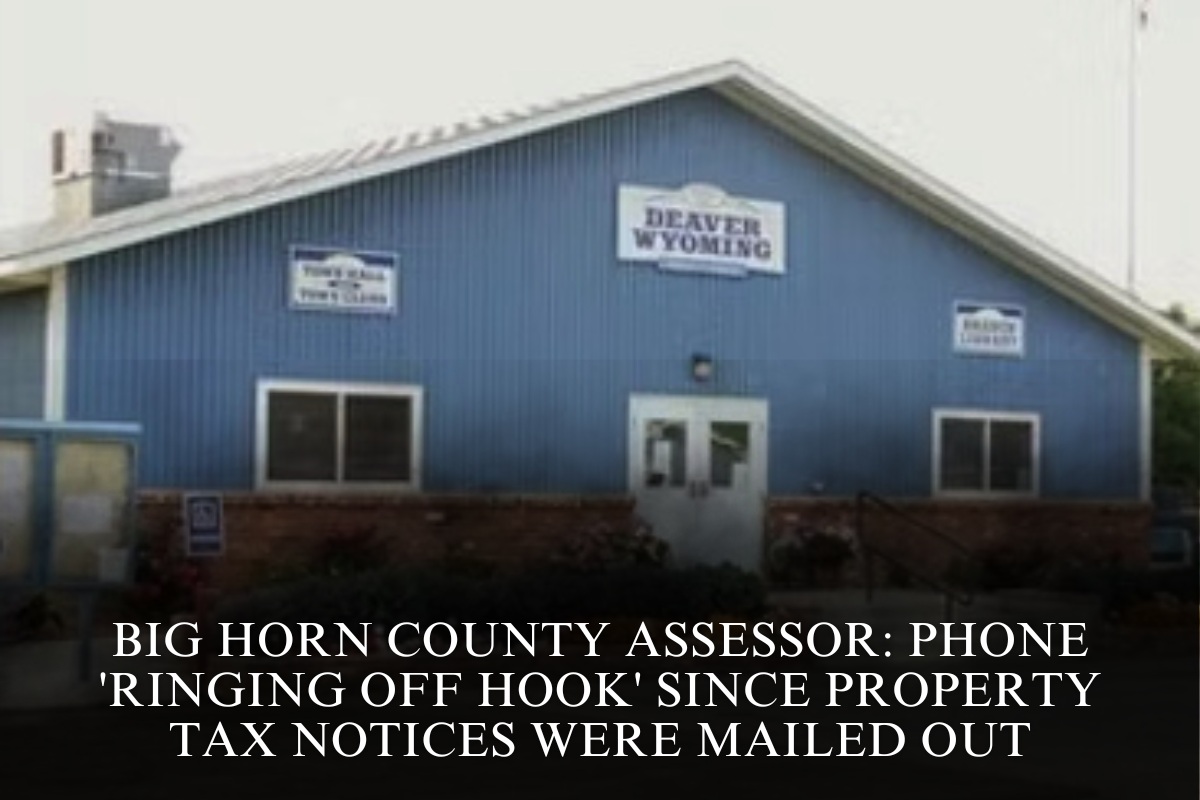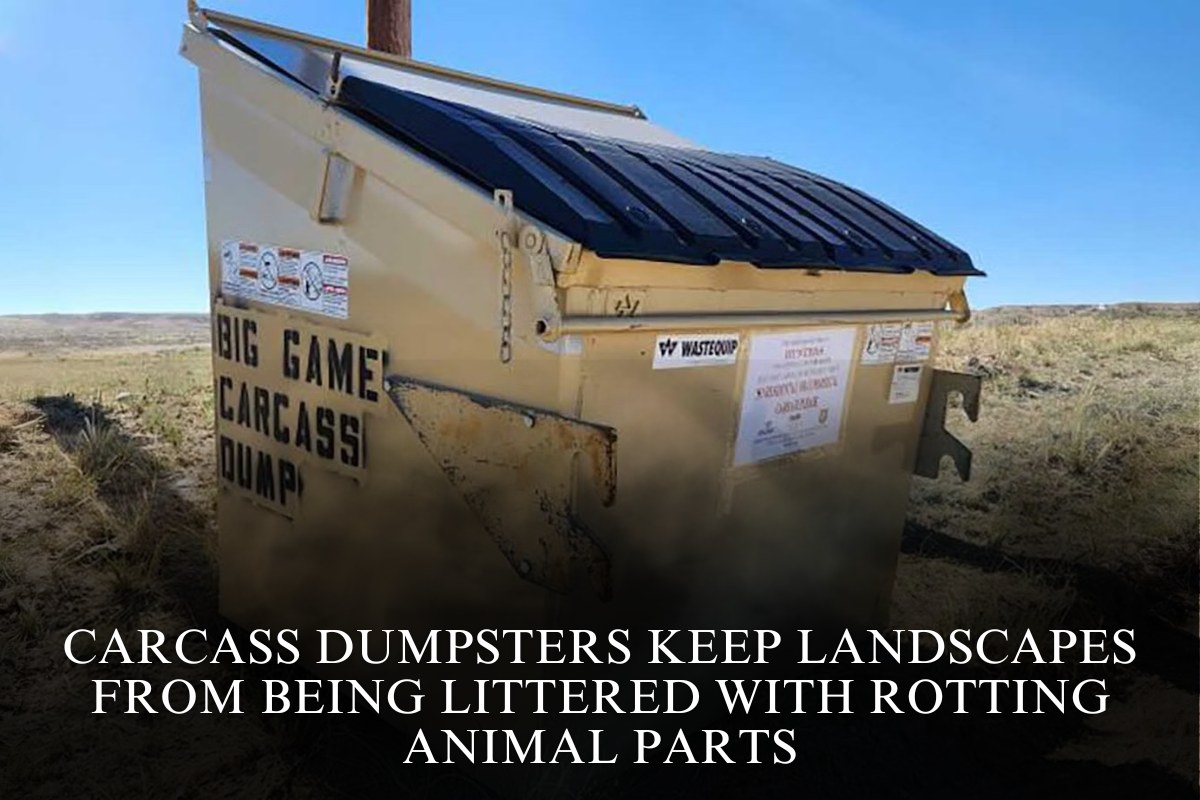Uinta County Sheriff Andy Kopp wanted to give his deputies a raise.
Officers at his municipal counterpart, the Evanston Police Department, were paid more per hour. However, the Wyoming Legislature’s property tax cuts reduced the county’s revenue for salary increases.
However, President Donald Trump’s mass deportation campaign created an opportunity. U.S. Immigration and Customs Enforcement requires facilities to house detained immigrants who the administration wishes to deport. The Uinta County Jail had space.
So, in June, Kopp appeared before the Uinta County Commission and proposed capitalizing on the deportation drive by holding ICE detainees for a fee.
Kopp estimated that by holding approximately 30 ICE detainees per day, the county could generate more than $500,000 per year, far exceeding the amount required to cover staff raises.
“As long as President Trump is in [the White House], we won’t have to worry about anything for 3.5 years,” Kopp said, according to a transcript of the meeting obtained by the Uinta County Herald.
However, critics of the move argue that increasing his department’s budget based on a steady stream of detained immigrants carries both fiscal and moral risks. “Making local government dependent on the federal government’s immigration system seems like a dangerous game to play,” said Antonio Serrano, advocacy director for the American Civil Liberties Union of Wyoming.
Kopp is essentially leveraging Trump’s federal political agenda to offset the costs of broad property tax cuts enacted by the Legislature.
Adapting to cuts
Wyoming lawmakers have reduced the property tax revenues that support county and local government. Conservative leaders in the House and Senate pushed through a 25% property tax cut during the 2025 legislative session, and local governments across the state have since struggled to maintain services.
Meanwhile, Kopp informed county commissioners that the salaries he can offer deputies are limiting his ability to recruit and retain good officers. These budget problems are exacerbated by the Legislature’s property tax cuts, he told WyoFile.
“Treat them right, pay them well, and train them up,” Kopp said of salary increases for jail staff who guard ICE detainees.
Since the June meeting, Kopp has given his deputies raises, which will increase his annual salary and wage budget by approximately $359,000. So far, ICE holds are coming in at the rate he requires to cover the bill, he stated.
“It’s working out as we expected,” Kopp said.
He is still waiting for the federal government to accept a rate increase of $120 per day per inmate, but he believes it will be approved by next month. There are “no issues with that,” he told WyoFile.
However, some of his other stated beliefs at the June commission meeting, such as the jail holding ICE detainees for no more than 72 hours and the people the federal agency would book in being criminals and public safety threats, do not hold up, according to interviews with immigration attorneys and Kopp conducted by the Uinta County Herald and WyoFile.
Human rights advocates and immigration attorneys are concerned that as the Trump administration pressures ICE to arrest and deport a large number of people — White House Deputy Chief of Staff Stephen Miller stated that the target was 3,000 daily arrests — due process and civil rights will suffer, and detention times will lengthen.
In Uinta County, Kopp described detained immigrants who arrived in distress. “There are a few who are definitely scared,” he told WyoFile. “They have sort of a panic attack. “It’s a scary situation.”
However, as a potential revenue source, the immigrant detention business appears to be doing well for the time being.
From June 1 to August 27, Uinta County housed 439 ICE inmates for $66 per day, according to invoice data obtained by WyoFile and the Uinta County Herald via a Wyoming Public Records Act request. Kopps charged the federal government just under $96,000 for those holds. If the federal government raises rates to $120 per day, the dollar amount will nearly double.
The $66 per diem fee was established in 2018. According to Kopp, the amount barely covered the costs of holding the inmates at the time. Other agencies that hold inmates for ICE, such as Sweetwater and Natrona counties, are paid more. Sweetwater County pays $120 per day, according to a spokesperson, and Natrona County pays $95 per day, according to Kiera Hett, a spokesperson for that sheriff’s office, who told WyoFile back in July.
Natrona County has been holding immigrants for ICE on a long-term basis. As of September 5, more than two dozen detainees in its jail had been locked up for six weeks. This month, WyoFile profiled one former Casper detainee, a Cuban man who became increasingly desperate as he sat in confinement with no clear way out, including deportation.
Out of public view
Though Uinta County consistently votes conservative, Kopp’s fiscal strategy is causing deep concern among at least some local taxpayers. Longtime Evanston resident and local immigration activist Tim Beppler told the Uinta County Herald and WyoFile that Kopp makes money for his department through policies that separate immigrant families.
“When you state that you’re going to engage in those types of activities, and that you’re going to do it for the money, to me that makes it worse,” said Beppler.
So far, the sheriff’s use of his jail to house immigrant detainees has not sparked widespread outrage. The majority of the detentions have taken place behind closed doors. Since the beginning of August, Kopp’s department has not listed people detained for immigration holds on the jail’s publicly available inmate roster—despite the fact that such detainees are still held there.
Kopp told WyoFile that previous ICE detainees were added to the roster due to technical errors.
Kopp understands that his plan will be criticized, he said.
“We could definitely be viewed as an arm of their goals,” Kopp stated about ICE. “I completely understand that. And I am fully aware that it is a hot topic, and not everyone is happy about it. However, it is a way to increase revenue during a budget deficit. We will take advantage of the opportunity that has arisen.
He declined, at least for the time being, an offer from ICE officials to enroll his department in a program being pursued by a growing number of Wyoming law enforcement agencies that would allow deputies to play a more direct role in detaining undocumented immigrants arrested on suspicion of local crimes.
Uinta County, like other southwestern Wyoming communities, has a sizable, albeit minority, population of Latino immigrants.
“I want my guys on patrol to concentrate on the citizens of Uinta County,” Kopp told reporters.
However, critics such as Beppler argue that Kopp has already allowed the proverbial camel to nose under the tent. “There’s going to be a great deal of pressure to engage more with ICE,” Beppler told reporters. “He’s going to find it difficult to not continue down that road at this point.”
An old but well-trod debate
During the first Trump administration, Uinta County saw a heated debate over immigration detention. Beginning in 2017, private prison companies proposed building a large immigration jail outside Evanston, sparking years of debate that divided the town and the state. Two prison companies eventually abandoned the idea of building in town.
Evanston residents who opposed previous proposals “didn’t want that community to be associated with something that heinous and gross,” Serrano stated. “I believe they will fight back against [Kopp’s use of his jail for immigrant detention]. “Because it is still gross.”
Earlier this year, WyoFile reported that a new private prison company expressed interest in building an immigration detention center in western Wyoming. According to county officials, the company inquired in Uinta County as well as Kemmerer.
In March, Uinta County Commission Chairman Mark Anderson told WyoFile that he did not communicate with company representatives.
“All the public hearings, all of these promises of jobs and then these companies pulling out,” says Anderson, “it’s just been so inconsistent that the appetite for it is just not there right now.”
Anderson and the other commissioners, on the other hand, have supported Kopp’s attempt to increase revenue by keeping ICE detainees in custody. If the income stream dries up, Anderson said it would be up to Kopp to handle the shortage. “Every elected official is responsible for balancing their budgets,” he told reporters. “If revenues decline, the sheriff would have to make hard decisions at that point.”
Short stays for criminal offenders?
When the sheriff pitched the idea to the commissioners, he described a system in which the jail would serve as a short stopover for immigrants being moved by ICE throughout the region.
“When I say ‘holds,’ these are all ICE inmates with criminal records who were picked up elsewhere, not in Uinta County,” Kopp explained during the June 25 special commission meeting. “They’re dropped off here and they go on from here, no more than 72 hours later.”
One commissioner applauded Kopp for raising funds by assisting ICE in deporting criminals. “These illegal criminals, who, in my opinion, should be deported, we’re assisting in that process,” Commissioner Eric South stated at the meeting, “and that’s also important.”
According to Kopp, the Uinta County Jail is being used to hold people arrested by ICE in Utah rather than Wyoming.
However, Kopp and South’s portrayal of immigration detainees as criminals conflicts with the emerging statistical picture of who is caught up in ICE’s dragnet. Data show that ICE is increasingly arresting people without criminal convictions, both nationally and in Wyoming.
Under federal law, unlawful presence in the country is a civil offense rather than a criminal one. (Overstaying a visa, for example, is a civil offense, whereas illegal entry into the country is a crime.)
Kopp’s ICE arrangement parameters were first revealed in the Herald’s July 9 issue. Eleven days later, Carlos Trujillo, a Salt Lake City immigration lawyer, challenged the sheriff’s description. “That is a lie,” Trujillo told Utah-based media outlet KSL, “because I can recall at least one of my clients who touched that place and had no criminal record whatsoever.”
In an interview with a WyoFile reporter on September 2, Kopp disputed Trujillo’s allegation. “I’m not a dishonest man,” he explained. Instead, he stated that as the summer progressed, he realized it was possible that some of the people ICE was sending him did not have a criminal record, but that it was difficult for his department to confirm.
Trujillo later told the Herald that two of his clients had been detained at the Uinta County jail, one for more than five days, and neither had any criminal charges or convictions.
“Not even a traffic citation.” “Nothing,” Trujillo replied. “Clean the records. However, they were paraded through Wyoming.”
Trujillo stated that one of his clients was in the process of naturalization when he was arrested by ICE agents.
Another Wasatch Front immigration attorney, Jared Lawrence, stated that he had a client in the Evanston jail who had been in the court process for legal citizenship since 2022. Lawrence’s client had committed no crimes other than illegally entering the country, according to his attorney. They were attempting to rectify the immigration offense in court.
All of the attorneys interviewed by WyoFile and the Uinta County Herald declined to name their clients, citing a lack of authorization and concerns about retaliation from ICE.
One of Utah attorney Nicholle Pitt White’s asylum-seeking clients is a Colombian national married to an American citizen who will have their first child in mid-September.
Pitt White told the Uinta County Herald that the man was transferred to Evanston for two days by ICE after being arrested for unpaid speeding tickets. The man was then transferred to a Texas detention facility.
Kopp’s perception of who ICE would bring to his facility changed as the summer progressed.
On July 21, Kopp told the Herald that “we get all information on all individuals’ criminal records before accepting them.” However, on September 2, he told a WyoFile reporter that during the summer, he noticed ICE detainees arriving at his facility with the letters “NC” on their intake paperwork. Jail deputies discovered that “NC” stands for “no charges,” Kopp said.
“It doesn’t necessarily mean they haven’t been charged with a crime before,” said the sheriff, and “most of them that we’re seeing are indeed charged with a criminal offense.”
But, he admitted, “I still don’t have a good answer for the NC part.”
Kopp has lent his jail to a system that is increasingly treating people who have only committed the civil offense of overstaying their visas in the same way that criminals are treated, according to immigration attorneys.
“Correct me if I’m wrong, but the Uinta County jail is a jail for criminals,” Trujillo claimed. “That alone should make anyone think twice about having non-criminals there. It’s inhumane and contradicts our American values.”
Beppler, the local activist, was concerned about a form of mission creep. “He will not be able to avoid holding people who do not have criminal charges because it’s part of the ICE system at this point,” he told reporters. “My fear is you begin at a small level and it creeps and grows larger.”
Kopp’s prediction that ICE would only keep people in his jail for 72 hours has also proven to be inaccurate. The agency has occasionally placed people there for periods of five to seven days, with the longest stay, according to Kopp, being a detainee who spent 14 days in Evanston.
Another inmate stayed for ten days. However, unlike the inmates held in Natrona County for weeks on end, Kopp claims his jail does not serve as an overflow facility for ICE detention centers in Utah. According to Kopp, ICE transports people through Evanston on their way east or west.
He stated that the majority of the inmates brought in by ICE are released within the 72-hour period he previously described. However, because the Uinta County jail’s public, online roster no longer includes ICE detainees, it is difficult for the public to determine who is in custody and for how long.
Public rosters and detainees
Over the summer, Herald journalists observed what appeared to be a disappearance of ICE detainees from the jail’s online, public roster.
Throughout June and July, the jail’s public roster indicated a number of immigration holds. A Herald reporter and editor noticed that immigration holds were frequently listed, and in some cases, names appeared on the roster for days.
Immigration holds were removed from the online roster at the beginning of August. Throughout the month, Herald journalists monitored the roster and saw no additional immigration holds. During that month, Kopp said the jail housed up to 150 immigrants for ICE.
When WyoFile inquired about the apparent change in his roster, Kopp stated that there had been no policy shift regarding which inmates his department listed publicly.
Instead, he stated that the previous listing of people in custody on immigration holds was an error caused by technical issues with his department’s system for publishing the jail roster.
“Most jails have policies in place where they don’t log people who might be in transport for various reasons,” Kopp told me. “It’s a policy and practice that if we have inmates in transport, we historically, since I’ve been there, don’t tend to put them on the jail roster.”
Other sheriff departments in the state, including Sweetwater and Natrona counties, publicly list immigration holds.
(The Natrona County sheriff does not maintain a roster on his website, but he does send a roster to news outlets, which some publish on a daily basis and includes ICE holds.) Officials from both agencies told WyoFile that they publish ICE detainees on the public roster regardless of how long they are held in those two jails.
Wyoming law shields only a small number of offenders, such as juveniles, from public disclosure; the names of the vast majority of those imprisoned in the state are public record. According to Kopp, sheriffs can set their own policies for what information to publicize online.
When elected, he debated whether to publish an inmate roster at all, given the stigma that a jail sentence can bring to residents of small towns like those in southwest Wyoming, he explained.
In an interview, Chris Wages, a Buffalo attorney who does public records law work for the Wyoming Press Association, stated that withholding the names of immigrant detainees while publishing the names of other inmates gives the public an inaccurate picture of who is passing through the jail in any given week.
“The number and nature and identity of inmates traces directly back to fiscal responsibility,” he stated.” “As a private citizen, if my sheriff’s department was all of a sudden doubling their income, increasing their budget, I’d want to know why, under what circumstances, what the source of the revenue is, who’s making decisions, where the resources are being put, and how it affects my local population.”












